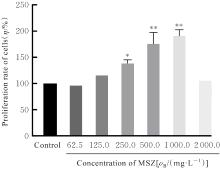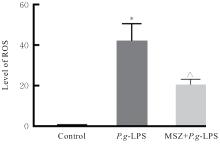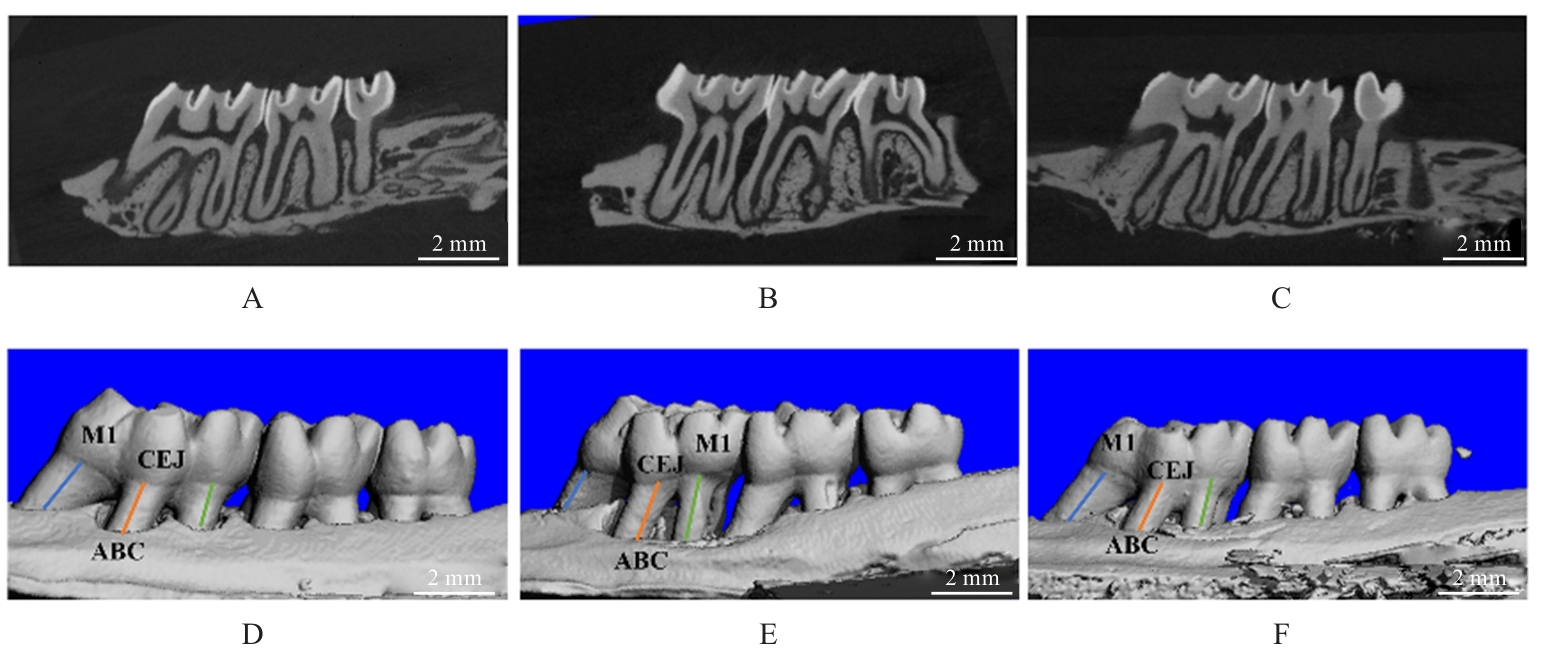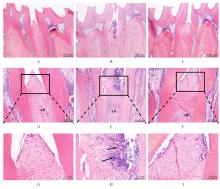| [1] |
Xueting CHI,Fangyuan CHEN,Zifeng PI,Guangfu LYU,Yuchen WANG,Yinqing LI,Xiaowei HUANG,Zhe LIN.
Improvement effect of velvet antler polypeptide on postmenopausal osteoporosis in rats and its mechanism
[J]. Journal of Jilin University(Medicine Edition), 2024, 50(4): 963-969.
|
| [2] |
Jianan HAN,Zhuorui LIU,Peiyong ZENG,Shuang JIANG,Hongyu LI.
Anti-fatigue effect of Wujia Shengmai Yin in mice and its mechanism
[J]. Journal of Jilin University(Medicine Edition), 2024, 50(3): 689-696.
|
| [3] |
Jing TANG,Huan LI,Shuo ZHANG,Ligang JING.
Analysis on association between serum homocysteine and inflammatory response and oxidative stress in patients with acute ischemic stroke
[J]. Journal of Jilin University(Medicine Edition), 2024, 50(3): 786-790.
|
| [4] |
Yiyan YU,Zhimin ZHANG,Jiawen CHEN,Xin LIU,Yan LI,Hongyan ZHAO.
Research progress in relationship between macrophage polarization and oral diseases
[J]. Journal of Jilin University(Medicine Edition), 2024, 50(3): 864-871.
|
| [5] |
Yingxin RUAN,Junya JIA,Zhanfei WU,Wenya SHANG,Pengyu ZHANG.
Effect of NLRP3 inflammatome in renal interstitial fibrosis induced by unilateral ureteral obstruction in rats and its mechanism
[J]. Journal of Jilin University(Medicine Edition), 2024, 50(3): 587-595.
|
| [6] |
Yuexin LIU,Yongwei LAI,Yanchun WANG,Bo XU,Qian LU,Ying AN,Kuang REN,Hongyan FAN.
Improvement effect of total flavonoids of Sophora flavescens on oxidative stress induced by lead acetate in leydig cells in mice and its in effect on Keap1/Nrf2 signaling pathway
[J]. Journal of Jilin University(Medicine Edition), 2024, 50(2): 320-325.
|
| [7] |
Kewen JIA,Yuemeng ZHU,Siyu CHEN,Minghui LI,Jiaqian YOU,Sheng CHEN,Yanmin ZHOU.
Application of autologous platelet-rich fibrin in immediate implant placement of molar with periapical periodontitis: A case report and literature review
[J]. Journal of Jilin University(Medicine Edition), 2024, 50(2): 536-544.
|
| [8] |
Xueting CHI,Xiaowei HUANG,Fangyuan CHEN,Gaofeng ZHOU,Jinji WANG,Guangfu LYU,Zhe LIN,Qing GONG.
Improvement effect of velvet antler polypeptide in osteoporosis model rats and its effect on SIRT1/FOXO1 signaling pathway
[J]. Journal of Jilin University(Medicine Edition), 2024, 50(1): 120-127.
|
| [9] |
Yang LIU,Ming LU,Wen HONG,Kelin HUANG.
Improvement effect of curcumin combined with fecal bacteria transplantation on mice with ulcerative colities induced by DSS
[J]. Journal of Jilin University(Medicine Edition), 2024, 50(1): 136-142.
|
| [10] |
Cong JIANG,Wenzhou XU,Hongyan LI,Yue SUN,Lan A.
Clinical efficacy of PDCA cycle management model cycle management combined with pulsed tooth punch applied in maintenance period of patients with moderate to severe periodontitis
[J]. Journal of Jilin University(Medicine Edition), 2024, 50(1): 221-227.
|
| [11] |
Weichen HOU,Guimei ZHANG,Shushi ZHANG.
Inhibitory effect of gingerone on apoptosis of HT22 cells by alleviation oxidative stress damage after OGD/R through activating Nrf2/HO-1 signaling pathway
[J]. Journal of Jilin University(Medicine Edition), 2024, 50(1): 97-105.
|
| [12] |
Xuebing ZHOU,Qianqian LIN,Yanchun LI.
Effect of polysaccharides from porphyra on inflammatory factors secreted by macrophages in mice and its mechanism
[J]. Journal of Jilin University(Medicine Edition), 2023, 49(6): 1452-1456.
|
| [13] |
Wenting HUI,Tongtong SONG,Min HUANG,Xia CHEN.
Effect of hydrogel-based delivery of bFGF on function of NIH3T3 cells after oxygen-glucose deprivation
[J]. Journal of Jilin University(Medicine Edition), 2023, 49(6): 1484-1490.
|
| [14] |
Xiaolei XUE,Baomei XU.
Expression of Klotho protein in placenta exosomes in patients with pre-eclampsia and its effect on oxidative stress in vascular endothelial cells
[J]. Journal of Jilin University(Medicine Edition), 2023, 49(6): 1528-1538.
|
| [15] |
Xinyu LIU,Kepeng ZHANG,Xinyi LI,Han BAO,Haoyan ZHANG,Ling HU,Xianchun ZHU.
Treatment of anterior teeth fan-shaped displacement caused by periodontitis with invisible orthodontic appliance without brackers: A case report and literature review
[J]. Journal of Jilin University(Medicine Edition), 2023, 49(4): 1046-1052.
|
 ),Min HU1(
),Min HU1( )
)

















